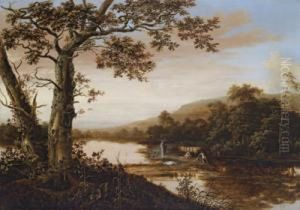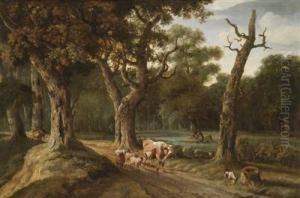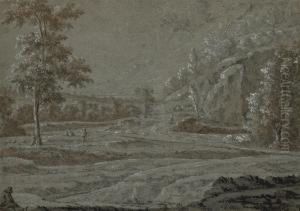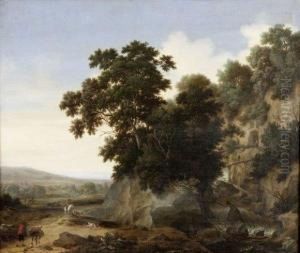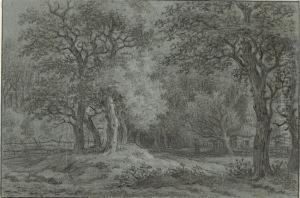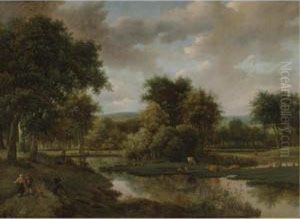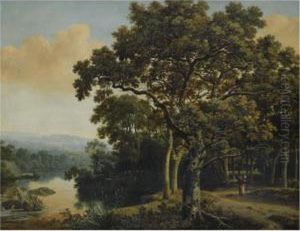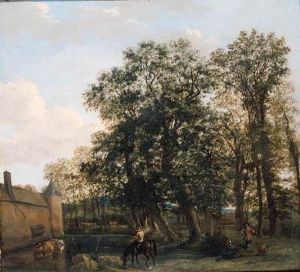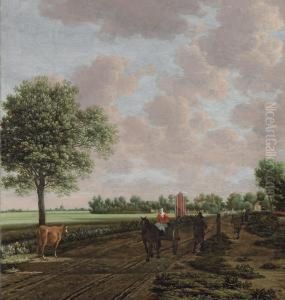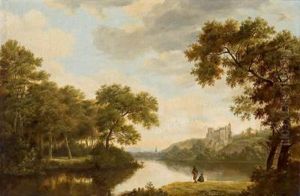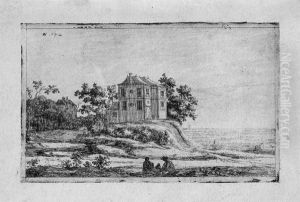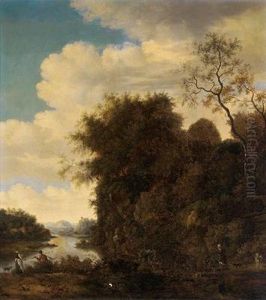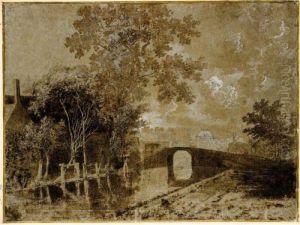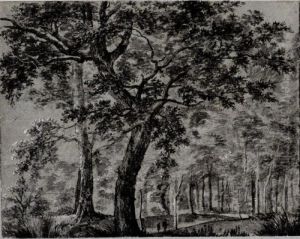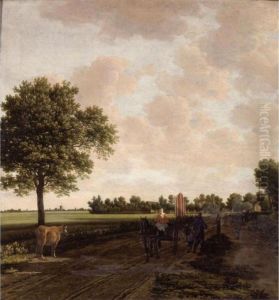Joris Abrahamsz Van Der Haagen Paintings
Joris Abrahamsz van der Haagen was a Dutch Golden Age landscape painter, born around 1615, likely in Arnhem, Netherlands. Not much is known about his early life or training, but he became one of the prominent landscape artists of his time, contributing significantly to the development of Dutch landscape painting. Van der Haagen's works are characterized by their meticulous attention to detail, keen observation of nature, and a remarkable ability to capture the serene beauty of the Dutch countryside. He was particularly adept at depicting the varied landscapes of the Netherlands, from its dense forests and tranquil rivers to its bustling villages and expansive skies.
Van der Haagen lived and worked in The Hague for most of his career, where he became a member of the painters' confraternity, Pictura, in 1639. This association connected him with other leading artists of the era, facilitating collaborations and exchanges that enriched his artistic development. His paintings often feature a harmonious blend of naturalism and idealization, reflecting both the reality of the Dutch landscape and the artist's personal interpretation.
He was not only celebrated for his oil paintings but also for his skill in creating detailed etchings and engravings, which helped disseminate his views of the Dutch landscape to a broader audience. Van der Haagen's work was highly sought after during his lifetime, and he received commissions from many notable patrons, including members of the Dutch aristocracy and wealthy bourgeoisie.
Despite his success, Joris Abrahamsz van der Haagen remains a somewhat elusive figure in art history, with limited documentation on his personal life. However, his contributions to Dutch landscape painting have ensured his place in the annals of art history. His ability to evoke the essence of the Dutch landscape, with its interplay of light and shadow, and his detailed, almost poetic representations of nature, continue to be admired by art enthusiasts and historians alike.
Joris Abrahamsz van der Haagen died in 1669 in The Hague, leaving behind a legacy that has cemented his status as a key figure in the Dutch Golden Age of painting. His works are housed in many major museums around the world, where they continue to be celebrated for their beauty and historical value.
